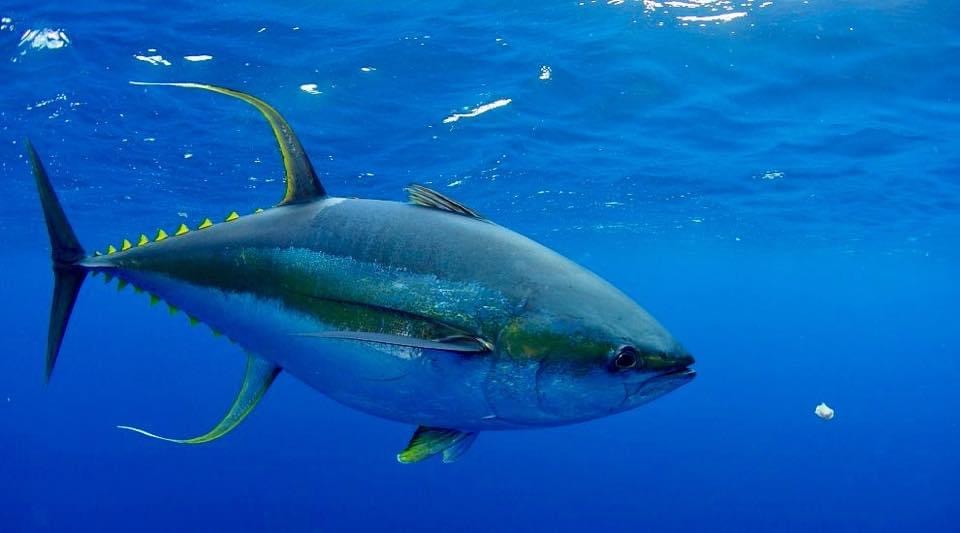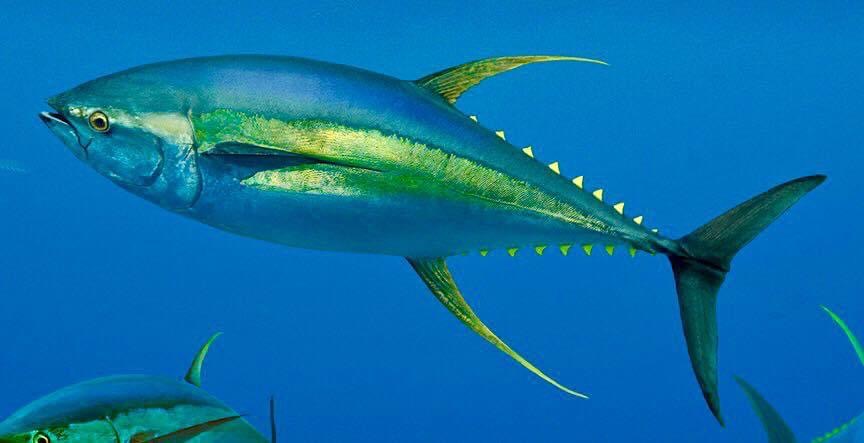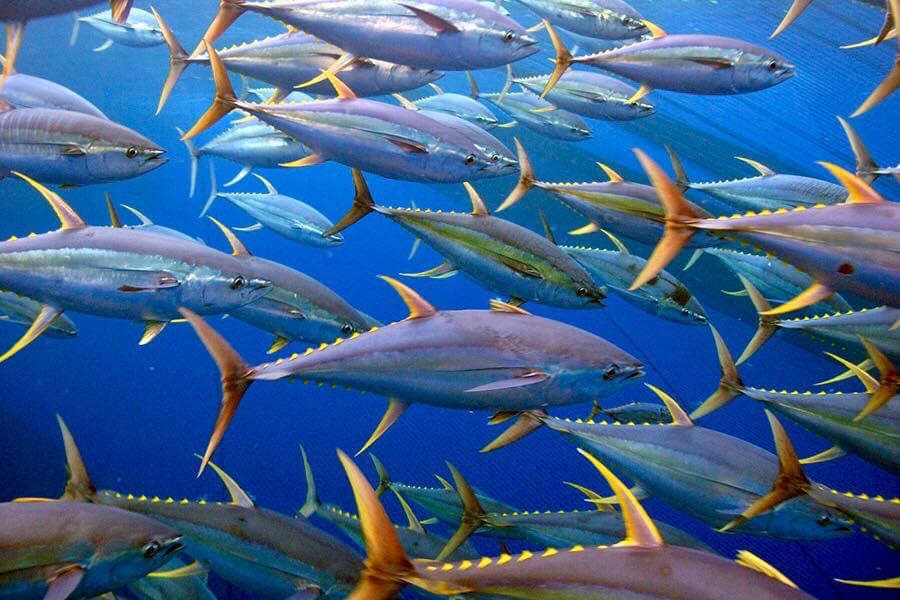Yellowfin Tuna
- dldragon28
- Sep 2, 2020
- 2 min read
A well know species to commercial and recreational fisherman as these large bony predators can reach lengths of 7 feet and weigh up to 450 pounds. This species is identifiably by their long matching yellow fins and ridged finlets following after. A migratory species that inhabits the Pacific, Atlantic, and Indian oceans while forming schools with similar species like Skipjacks and Bigeyes. They have a diverse diet that changes through their lifetime from when they begin as a tiny larvae feasting on zooplankton to when they are older and larger eating prey such as other bony fish, squid and crustaceans. They reproduce by broadcast spawning where males and females release sperm and eggs into the water where they are then fertilized. Their predators, aside from humans, include billfishes (i.e. sailfish, marlins and swordfish), toothed whales, and sharks. Overall the species is not considered to be overfished, but in some areas like the Philippines their stocks are being depleted due to poor fishing practices. The most common means of catching this species is with the “purse-seine” fishing method (just think of the scene where Nemo and Dory get stuck in the net with all the other fish). This practice is known for its high rate of by-catch. Especially in the tuna fishing industry a frequent by-catch species used to be dolphins, which sparked the “dolphin free tuna” campaign. But many other species are affected by by-catch. But what YOU can do to ensure that your tuna or any fish species is sustainably caught and harvested is by downloading the “Seafood Watch” app made by the Monterey Bay Aquarium! Whether you’re buying fish from the store or a restaurant, it is your responsibility as a consumer to understand how and where it was caught! The best kind of consumer is an educated consumer!!
Originally posted on 6 January 2019
(not my pictures)










Comments